|
|
|
LAMBORGHINI ESPADA
1/18 AUTOART (74502)
Year/Anno :1968
Color : Blue Met
My rating/Mio Voto : 92/100
Value for Money/Rapporto qualità prezzo : 90/100
Original price/Prezzo originale: € 90
Evaluation/Quotazione: € 200/250
Materiale: Die-cast

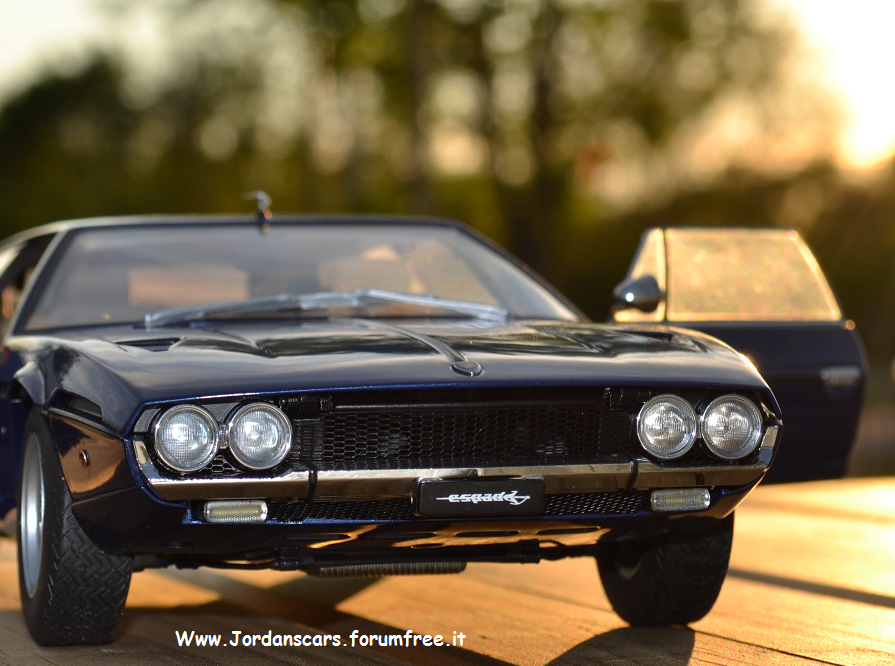
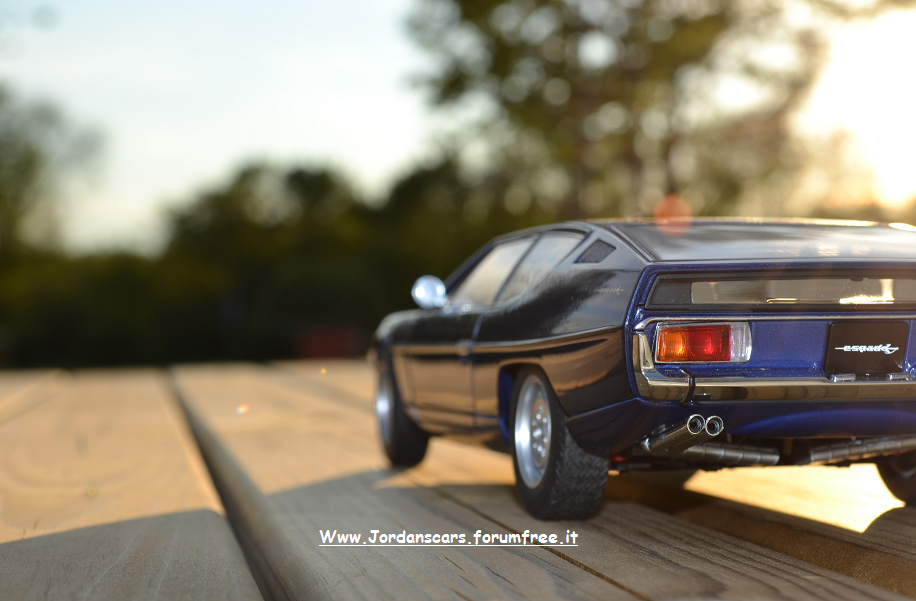

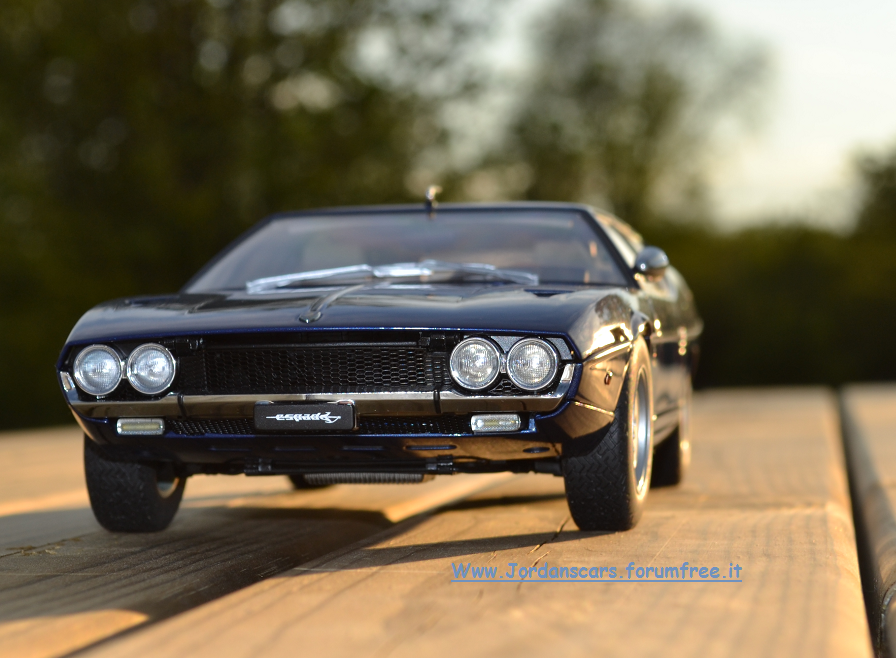
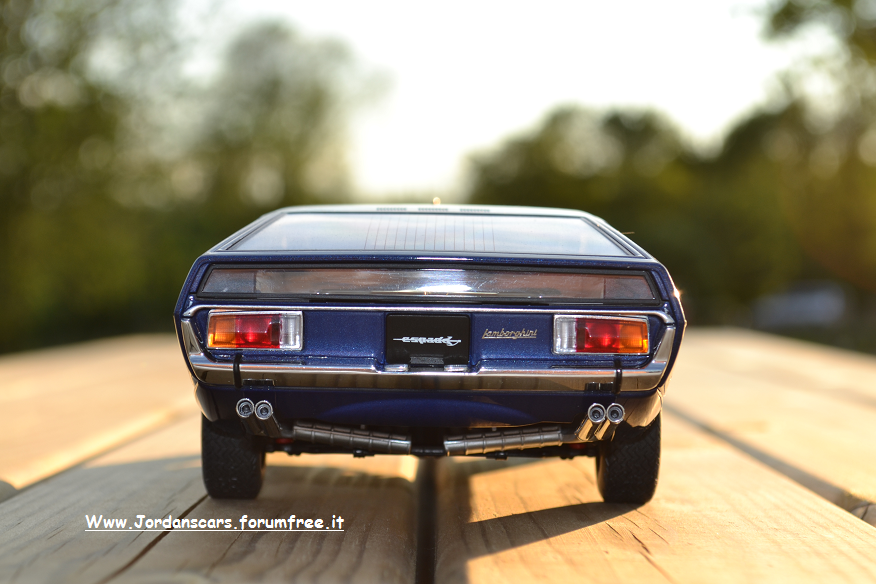
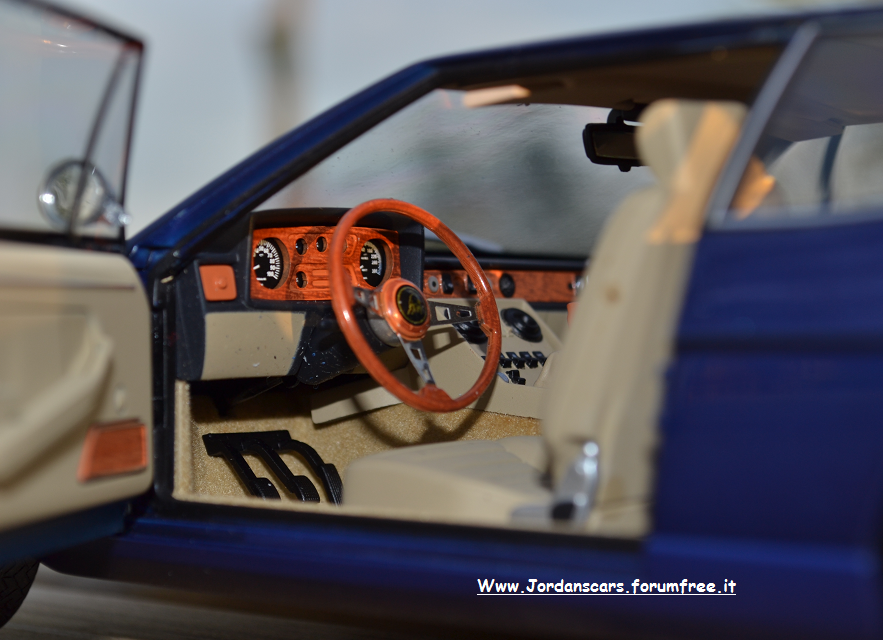
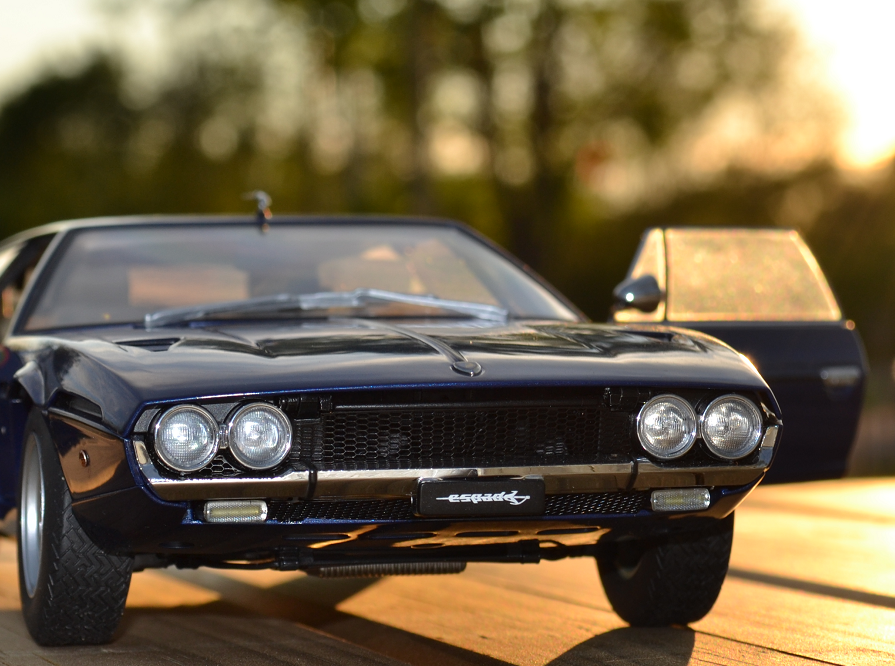
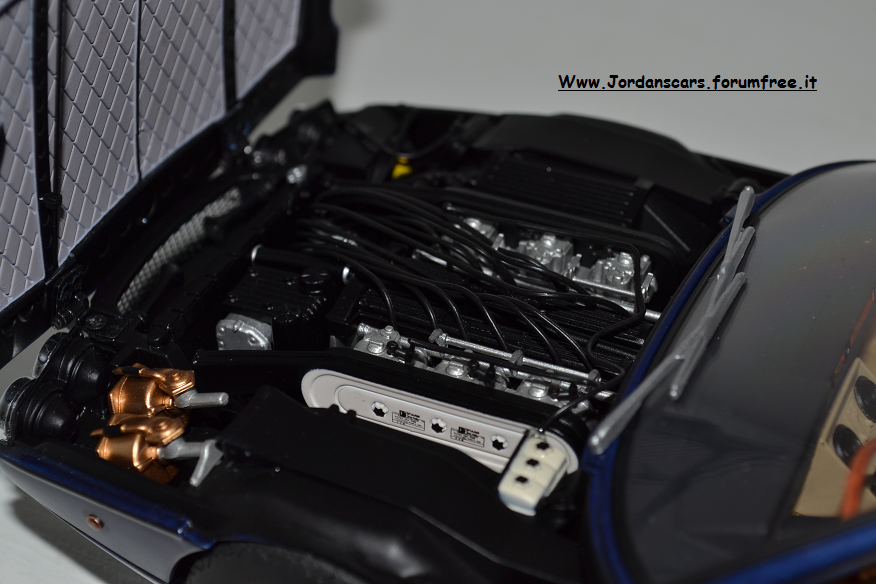
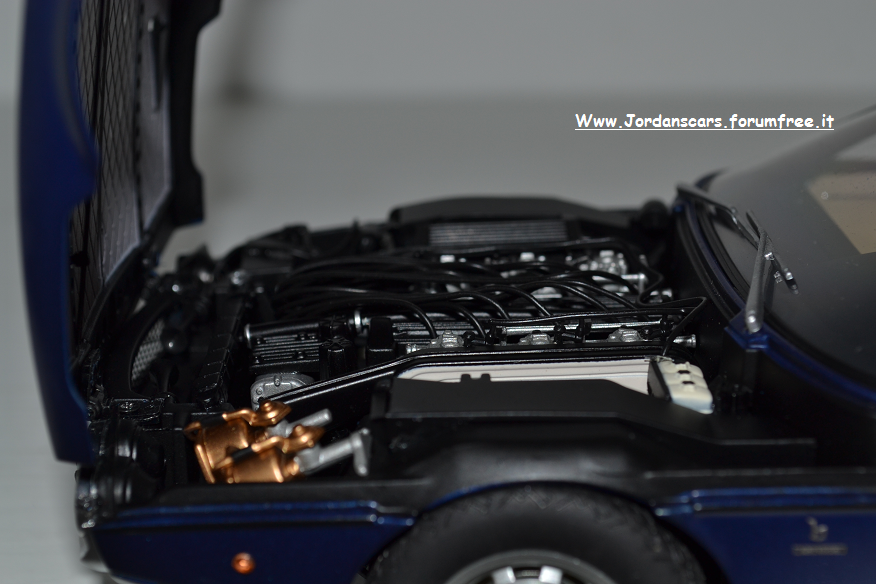


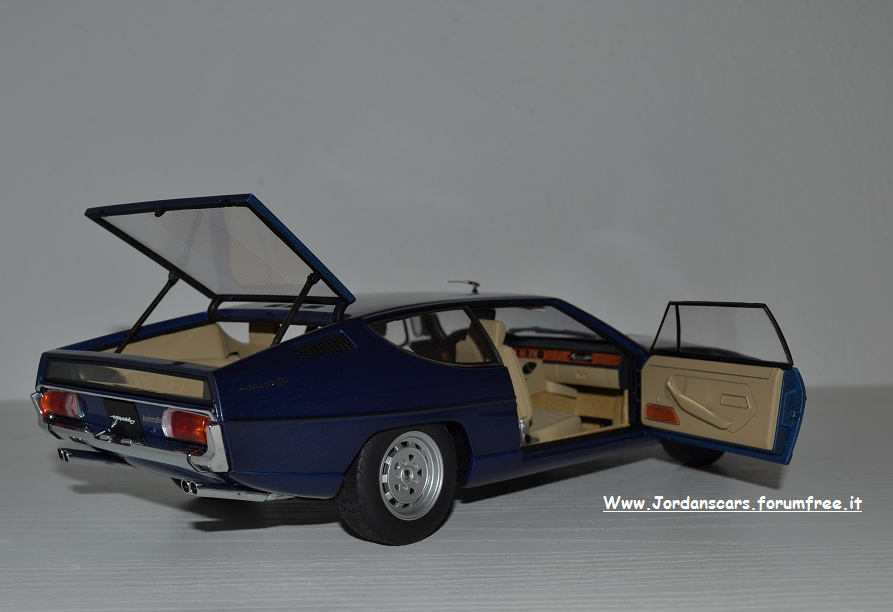
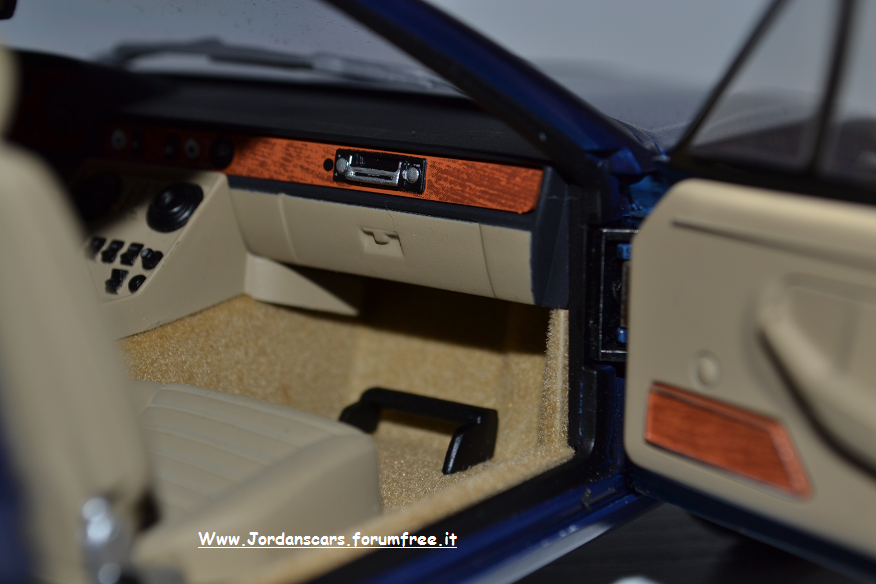
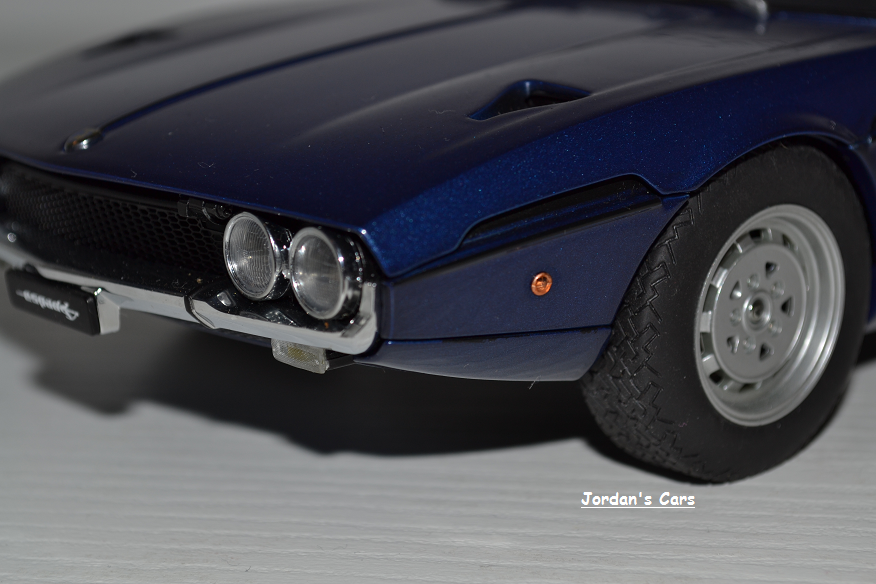

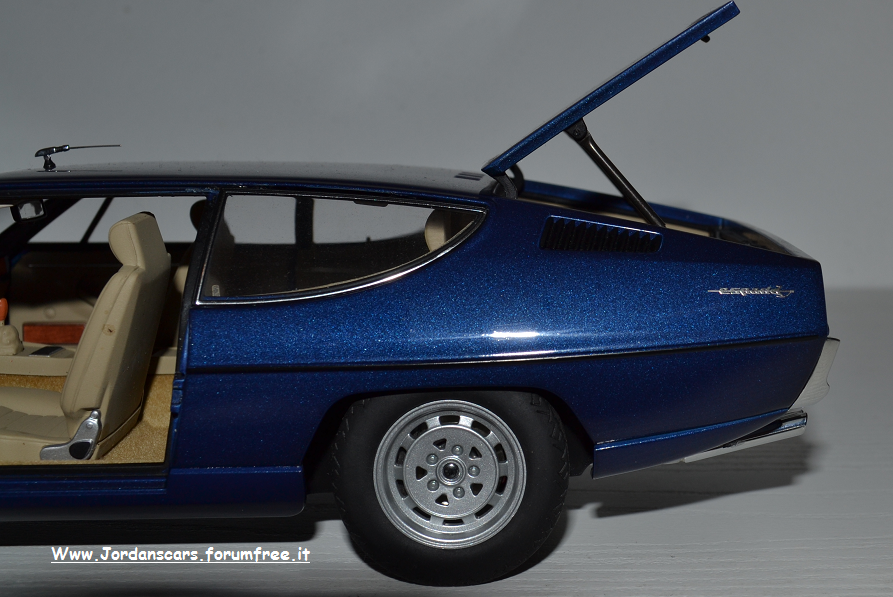
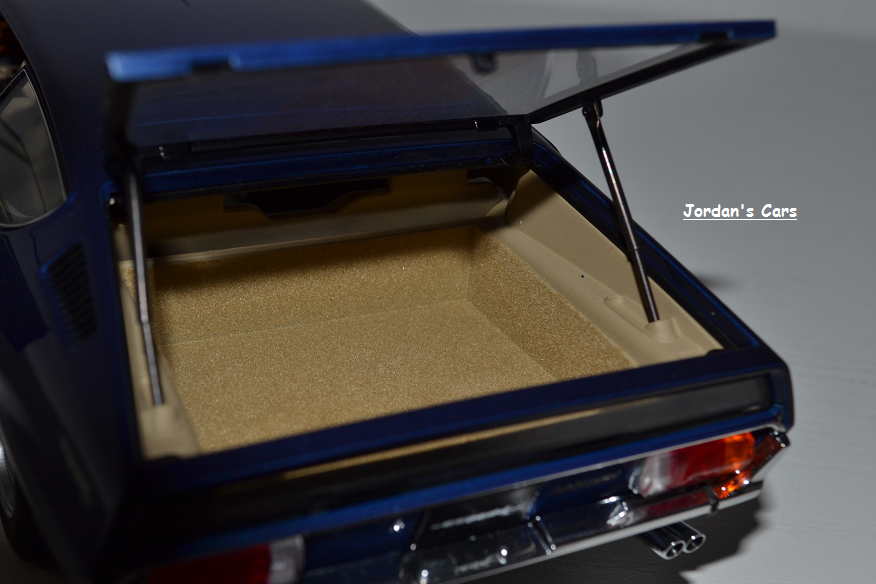
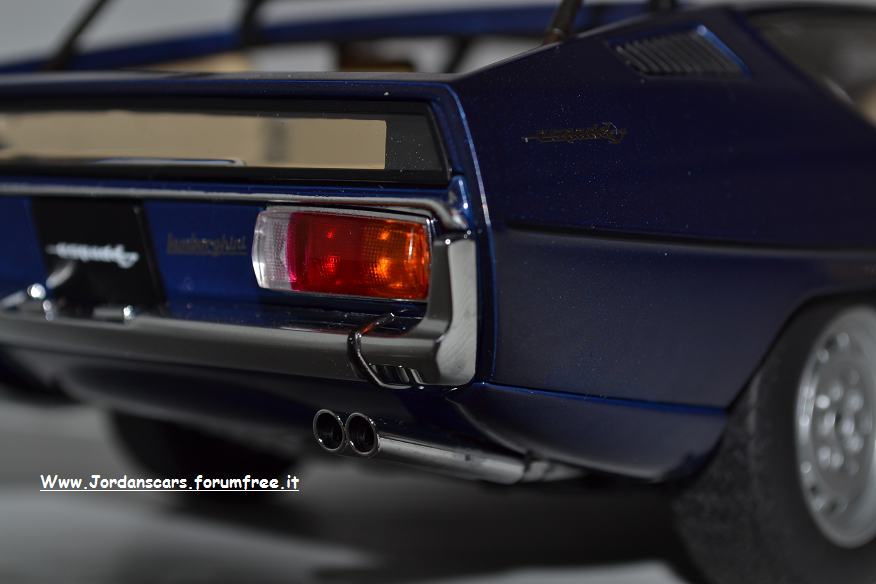

Storia(Wiki):
La Espada è un'autovettura prodotta dalla Lamborghini tra il 1968 ed il 1978.
Il successo mediatico raccolto dall'avveniristico prototipo a 4 posti Marzal, indusse la Lamborghini a realizzare versione "industrializzabile" per la produzione in serie.
Partendo dalla meccanica della 400 GT, con passo allungato di 15 cm, la casa di Sant'Agata Bolognese realizzò una coupé 2+2 di notevole personalità. Bertone riuscì a "civilizzare" la futuribile linea della Marzal, garantendo al contempo sportività, originalità e abitabilità, grazie all'adozione di soluzioni estetiche sperimentate sul prototipo Pirana, realizzato l'anno precedente su meccanica Jaguar E-Type. L'originale padiglione fastback col lunotto diviso in due parti e il nuovo telaio con pianale in lamiera e carrozzeria portante, consentirono all'abitacolo di accogliere 4 posti singoli, nonostante lo scarso sviluppo in altezza.[2]
La meccanica, allungamento a parte, rimane quella della 400 GT, compreso il motore V12 di 3929cm³, solo lievemente potenziato (325cv). Le finiture sono d'alto livello (la pelle rivestiva integralmente l'abitacolo, inclusa la plancia) e gli accessori, offerti di serie e a richiesta, erano numerosi: di serie l'aria condizionata e i vetri anteriori elettrici, mentre fra gli optional si potevano avere le cinture di sicurezza, la vernice metallizzata e la radio con fonocassetta.
L'Espada ottenne subito un grande successo. Nel 1971 arrivò la seconda serie dell'Espada. A cambiare furono soprattutto gli interni (plancia e strumentazione), mentre all'esterno l'unica novità è rappresentata dall'eliminazione delle barrette nere a protezione della parte verticale del lunotto. Il motore ottenne anche 25cv in più (350 in totale). Nel 1974 venne lanciata la terza serie della Espada. Le novità erano limitate agli interni, alle luci posteriori più grandi e ad alcuni dettagli della finitura. In alternativa al cambio manuale a 5 marce si poteva ottenere un automatico a 3 rapporti di produzione Chrysler.
La Bertone proponeva anche l'allestimento Vip con frigobar e televisore Brionvega Algol (collocato tra i sedili anteriori). La versione per il mercato USA è caratterizzata da due grandi paraurti in gomma nera e motore depotenziato, in ossequio alle normative statunitensi. L'Espada uscì di listino nel 1978 e non venne sostituita da alcun modello in base all'orientamento della proprietà di quel periodo (Georges-Henri Rossetti) la cui strategia di mercato era di "confinare" il marchio Lamborghini al settore delle sportive estreme a 2 posti (come la celebre Countach).
___________________________________--
The Lamborghini Espada is a 4-seat grand touring coupé built by Italian car manufacturer Lamborghini between 1968 and 1978.
The car was designed by Marcello Gandini at Bertone. Gandini drew inspiration and cues from two of his Bertone show cars from 1967, the Lamborghini Marzal and the Jaguar Piraña.
Rear view
The Espada was a four-seater GT, selling alongside the 2+2 400GT and the mid-engined Miura. 1217 Espadas were made, making it the most successful Lamborghini model until the expansion of Countach production in the mid-1980s.
The Spanish name "Espada" (pronounced [esˈpaða]) means "sword", referring to the sword that the torero uses to kill the bull in the corrida.
During its ten years in production the car underwent some changes, and three different series were produced. These were the S1 (1968–1970), the S2 (1970–1972) and the S3 (1972–1978). Each model featured interior redesigns, while only minor details were changed on the exterior.
The Espada was launched at the 1968 Geneva Motor Show. The original design of the dashboard was inspired by the Marzal concept car, and featured octagonal housings for the main instruments, topped by an additional binnacle for the secondary gauges. Wheels were Campagnolo alloys on knock-off hubs, of the same design seen on the Miura. The tail lights were the same units mounted on the first series Fiat 124 Sport Coupé.[1] 186 were made before January 1970.
At the 1970 Brussels Motor Show Lamborghini unveiled the Espada S2. Outside the only change was the deletion of the grille covering the vertical glass tail panel. Inside changes were more radical: all-new dashboard, centre console and steering wheel were installed. The instrument binnacle was of a more conventional rectangular shape, with round gauges. A wood-trimmed fascia extended along the entire width of the dashboard. Power output increased to 350 PS (257 kW; 345 bhp) due to a higher 10.7:1 compression ratio; the brakes were upgraded to vented Girling discs. Like the series 1; 205VR15 Pirelli Cinturato CN72 tyres, suiting the cars handling better until the Power steering was offered as an option. 575 Series II Espada were made,[1] making it the most popular and desirable variant.
The Espada S3 was launched in 1972. Its 3.9 L V12 engine produced 325 PS (239 kW; 321 bhp) With the second redesign the dashboard changed to a aluminium-trimmed cockpit that kept all instruments and most controls (including the radio) within easy reach of the driver. Newly designed wheels on five-stud hubs replaces the earlier knock-off wider wheels fitted with Pirelli Cinturato 215/70WR15 CN12 tyres,[3] making the Espada S3 instantly recognizable; other exterior changes included the square instead of hexagonal mesh grille and tail lights from the Alfa Romeo 2000 replacing the previous Fiat-sourced ones. In 1974, a Borg Warner automatic transmission became available. From 1975 large impact bumpers had to be installed to meet United States safety requirements; some people consider cars produced with them as a separate fourth series, but Lamborghini did not officially change the model designation.
The Espada used a monocoque steel body. Suspension was fully independent, with double wishbones, coil springs, hydraulic shock absorbers and anti-roll bars.four wheel disc brakes Twin fuel tanks held 95 l (25 US gal) of gasoline; the fuel cap was hidden behind a black cosmetic grille in the C-pillar, one of Gandini's signature touches.
Its 3,929 cc (240 cu in) V12 engine breathed through six Weber side-draft carburators and 24 valves commanded by two chain-driven overhead camshafts per bank. The gearbox was mounted in block with the engine. Most transmissions were manual, and the Espada also introduced one of the first automatic transmissions able to transfer the torque of a large sporting V12. It had unusual gearing, with 3 ratios: drive, 1 and reverse. When leaving the factory it originally fitted Pirelli Cinturato 205VR15 tyres (CN72) and from the series 3 onwards it fitted 215/70VR15 Cinturato CN12.
RELATED MODEL CARS/MODELLI CORRELATI:
Lamborghini Countach Lp500s ---> https://jordanscars.forumfree.it/?t=75092507
Edited by xJORDANx - 1/1/2023, 17:49
|
|

























